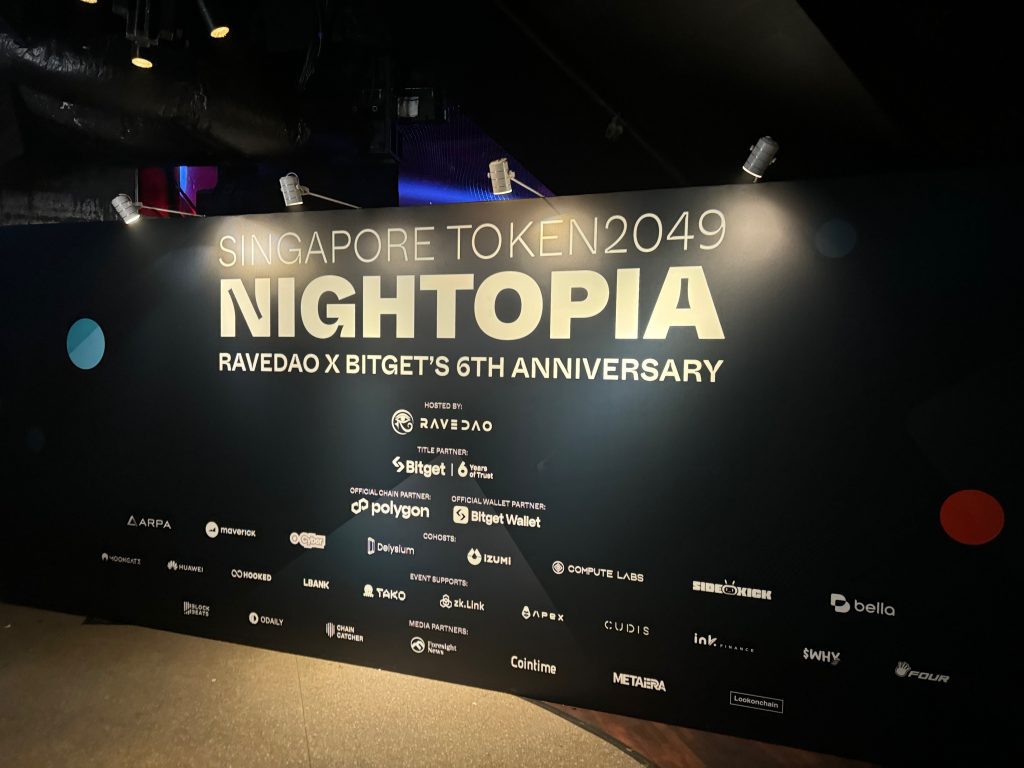
The notion that “crypto is dead” seems to persist in certain circles, particularly within the U.S. media and financial sectors.
However, after attending TOKEN2049 in Singapore in 2024, I can confidently say that crypto is very much alive and growing—though the real action may be happening outside the U.S. The conference was a vibrant display of innovation, with over 10,000 participants, 300 exhibitors, and an impressive speaker lineup that included some of the industry’s biggest names. More importantly, the insights from TOKEN2049 proved that the future of crypto lies not just in technology, but in global adoption and collaboration.
Here are my three key takeaways from TOKEN2049, alongside key observations pulled from an insightful piece by Hackernoon about the future of crypto and DeFi.

1. The Real Innovation is Happening Outside the U.S.
One of the most striking insights from TOKEN2049 was the global shift in where crypto innovation is happening. The U.S., with its
muddled regulatory framework, is losing ground to regions like Southeast Asia, the Middle East, and Europe, where governments are offering clearer and more supportive regulatory environments. In Singapore, for example, the Monetary Authority has laid out a well-defined framework for crypto firms to operate in. This environment has allowed major players like Binance and OKX to thrive, while in the U.S., companies face an uncertain future due to conflicting regulations from bodies like the SEC.
Key speakers like Joe Lubin, co-founder of Ethereum, and Mike Novogratz, CEO of Galaxy Digital, discussed the danger of the U.S. falling behind in this new frontier. As these figures pointed out, the crypto ecosystem is increasingly global, with more and more innovation happening in places that provide clear guidelines for entrepreneurs. This regulatory clarity allows for not only growth but also the kind of experimentation that will drive the next phase of blockchain and crypto development. According to Hackernoon, regions outside of the U.S. are now seen as the real
“laboratories” for Web3 development, and this was a major theme at TOKEN2049.
2. Developing Markets are the Real Ground for Crypto Adoption
Another key takeaway from TOKEN2049 is how developing markets are increasingly becoming the proving ground for crypto use cases. In many of these regions, the traditional banking infrastructure is either lacking or inaccessible for large portions of the population. As a result, blockchain and decentralized technologies are providing new ways for individuals to access financial services.
At the conference, several speakers highlighted how crypto is playing a critical role in improving financial inclusion, particularly in Southeast Asia, Latin America, and parts of Africa. Stablecoins are being used as a hedge against inflation, while blockchain-based remittance services are cutting costs and reducing transaction times for cross-border payments. Projects in these areas aren’t just speculative; they’re solving real-world problems.
In Hackernoon’s analysis, the future of DeFi and crypto lies in these regions because the potential for impact is much greater. TOKEN2049 echoed this sentiment, with many projects and panels focused on how blockchain can be used to bypass traditional gatekeepers and provide financial services to the unbanked. As developing markets continue to adopt these technologies, the crypto landscape will likely see its greatest growth in regions that need financial alternatives the most.
3. The Signal-to-Noise Ratio is Improving
Perhaps one of the most encouraging trends seen at TOKEN2049 is the maturity of the crypto market. During the 2021-2022 bull market, the space was flooded with projects, many of which were more hype than substance. However, as the dust has settled, what’s left is a more focused and serious set of builders who are working on long-term, impactful projects.
At TOKEN2049, the emphasis was on the products and innovations that are actually making a difference, and many of the speculative projects have fallen by the wayside. Hackernoon highlighted this shift in its coverage, noting that while there are still fringe projects, the industry has made strides in filtering out the noise. The projects gaining the most traction now are those with real use cases, robust business models, and a clear path to adoption.
In particular, the discussions around decentralized finance (DeFi) focused on building sustainable financial products that offer real value to users, not just the next “hot” token. Panels on Web3 infrastructure, scaling solutions, and multi-chain interoperability reflected this more mature approach, with a focus on building the necessary infrastructure to support widespread crypto adoption.

Additional Insights from Hackernoon: The Future of Crypto and DeFi
In their coverage of TOKEN2049, Hackernoon provided three additional takeaways that further emphasize the trajectory of the crypto space:
– **Institutional Adoption is Accelerating:** The involvement of institutional players like banks, asset managers, and global financial technology
firms was a major theme at TOKEN2049. With companies like Circle and Fireblocks playing key roles, it’s clear that institutions are no longer sitting
on the sidelines—they’re integrating crypto into their core business strategies.
– **Regulatory Harmonization is Key:** TOKEN2049 underscored the need for regulatory harmonization across regions. With countries like Singapore
setting a positive example, other regions are recognizing that clear and unified regulatory frameworks are essential to fostering innovation and
protecting consumers. Regulatory fragmentation, as seen in the U.S., only stifles growth and forces innovators to look elsewhere.
– **AI and Blockchain Convergence:** The convergence of artificial intelligence (AI) and blockchain technology was another hot topic at the
conference. This fusion promises to unlock new possibilities for decentralized applications, particularly in areas like smart contracts, predictive
analytics, and security.
Conclusion
TOKEN2049 Singapore was a powerful reminder that crypto is not just alive, but thriving globally. While the U.S. struggles with regulatory clarity, countries like Singapore, Dubai, and Japan are moving forward, enabling innovation to flourish. Additionally, developing markets are proving that crypto has real-world use cases, offering solutions to longstanding problems like financial inclusion and currency instability.
Finally, the shift in focus from speculative hype to real-world utility demonstrates that the crypto space has matured. Builders who are still innovating in this market are heads-down, focused on delivering long-term value. As Hackernoon noted, crypto is no longer just a playground for speculative projects—it’s a global movement pushing the boundaries of finance and technology.
